Music Educators Association of New Jersey
Serving teachers and students since 1927



At the November General Meeting, we were treated to a lecture by our MEA-NJ President, Nancy Modell, entitled Creative Composing: Embracing Creativity, Nurturing Musicianship. Nancy, who pioneered the Suzuki Piano method in Israel in the 1980's, has been training piano teachers in this country since 1992 through college courses, Suzuki Summer Institutes, and privately. In various teachers' forums, she has presented her ideas on how to introduce composition to students of all levels.
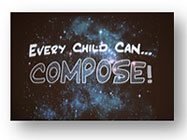
In a presentation with slides and video clips, Nancy first highlighted a six-year-old Suzuki-trained student performing his own composition. Nancy stressed that "Every child can compose." Any ordinary child, through composing, develops the ability to really listen to, appreciate and become a better interpreter of other composers' music.
Nancy believes that note reading is not a prerequisite for music students to compose. Nancy's creative students simply tap into their imagination to discover the delightful compositions that enchanted the audience. A three-year-old played "little Cloud," a song with words inspired by a book. A four-year-old child played "Tinker Bell's Magic." Then an eight-year-old dressed in costume at Nancy's annual Pianowe'en program, played "Tigress," inspired by an animated film.

Nancy finds an eight to ten week period, usually beginning after the winter school vacation, when she assigns students to compose their pieces. She announces a theme: Music Inspired by... Literature; Art; Nature; Motion; Dreams; or the Moving Image, for example. She suggests that the student give more thought at home to the chosen theme and how to describe his/her idea in sound. A teacher should stress that there are no right or wrong choices of sounds.
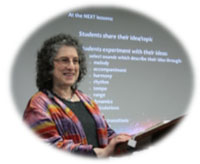
Nancy suggests: Ask leading questions, such as "How would you describe swaying wind chimes?" Students share their idea or topic with you and their parents, who are also encouraged to ask open-ended questions and to promote the student's independent thoughts, hoping for an "aha moment." Once each student has tried out various ideas at home and brings his/her favorite story line, emotion or situation to a lesson, ask more questions such as "What is the back story? What happens in the course of the piece? What is the action and where does it occur?" The teacher may then continue to ask questions to help students choose which tempo, range, articulation, rhythm and dynamics enhance the feelings they are expressing.

A teacher need not notate for a student. Younger students who do not read music may draw or write reminder cards and/or ask their parents to record excerpts on a smart phone or tablet so they can better remember their ideas for their composition. Students who read music may also record their ideas; then notate a draft of their motifs; and later write out the composition either by hand or using software.
Nancy's March studio recital is all "world premieres" of her students' original compositions. Advanced compositions written by older students inspire younger students. If a student is not technically ready to play his own ideas, guide him/her toward more manageable alternatives so they each can perform their composition.

Her students performed with poise and demonstrated boundless imagination in a variety of musical styles. Some student compositions highlighted by Nancy in her video were titled: "In the Old Hollow Tree" (including sections describing spiders, bats, and owls); "Falling;" "The Trip to Hawaii;" "The ladybug Girl" (including ants marching, picking up pebbles, catching leaves, bird tweets); "Agitation; "Rain;" "A Ghostly Night;" "Fox and Puppy;" and "Swamp."
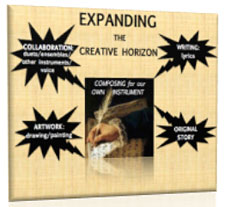
Nancy described the unexpected directions compositions might take which expand the creative horizon where, on their own, students write an original story; write lyrics; write piano duets or ensembles with other instruments; and/ or write pieces inspired by their own art works (drawings or paintings) which they bring to the recital and exhibit near the piano while they perform. One student wrote "Mazurka Rag in Black and White" and will choreograph a dance to her composition. To quote Nancy: "Don't be surprised by the emergence of undiscovered passions!"
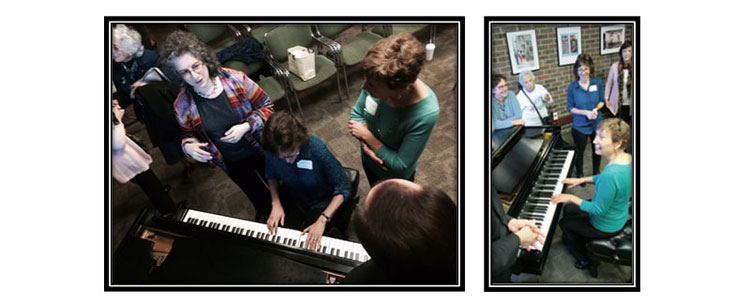
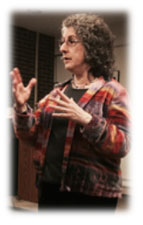
Nancy's presentation was warmly received and the audience paid rapt attention. During the question and answer period, teachers expressed their enthusiasm for her approach encouraging students to compose. The grandfather of a longtime student stood up and stated that it was always his grandsons' music, not Nancy's, that he would hear. The former student, now in college, has won recognition for his compositions. At the end of the lecture, some MEA members clustered around the piano with Nancy for some hands-on experience. Many teachers in the audience left the meeting determined to apply what they had learned.
RESOURCES TO EXPLORE: Pattern Play by Forrest Kinney; Piano Teacher's Guide to Creative Composition by Carol Klose; Musical Improvisation for Children by Alice Kay Kanack; Creative Composition Toolbox Step-By-Step Guide for Learning to Compose by Wynn-Anne Rossi.
Lisa Gonzales, photos
Nancy Modell, layout
Beverly Shea, writer